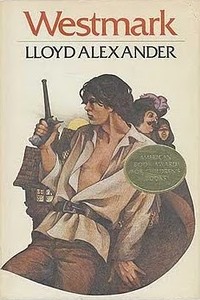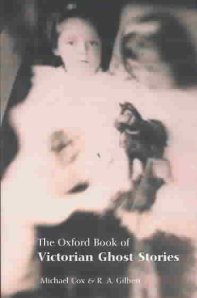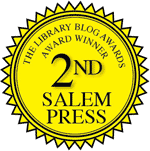 If you’ve already read the Williamsburg series, you can have a good laugh at this cover, which has a very noir, “Philip Marlowe in Colonial Williamsburg” feel that is completely unlike the actual novels. (Let me take a moment to picture Humphrey Bogart in a tricorn hat… OK, moving on.)
If you’ve already read the Williamsburg series, you can have a good laugh at this cover, which has a very noir, “Philip Marlowe in Colonial Williamsburg” feel that is completely unlike the actual novels. (Let me take a moment to picture Humphrey Bogart in a tricorn hat… OK, moving on.)
Elswyth Thane’s old-fashioned family saga begins in our own home town of Williamsburg in 1771. Julian Day, a schoolmaster newly arrived from England, is a staunch defender of King George, but befriends St. John Sprague despite his views on colonial independence. As revolution approaches, Day’s loyalties conflict with his friendships, including one with Tabitha “Tibby” Mawes, a young girl he helps to raise from poverty to gentility. That’s right: they are enemies “even in love!”
May-December romances are a recurring theme of this series, so it’s not much of a spoiler to say that Tibby and Julian become the matriarch and patriarch of a family which the novels follow for generations. Jeffrey Archer’s Clifton Chronicles, Ken Follett’s Century trilogy, and Jane Smiley’s “Last Hundred Years” trilogy seem to be leading a return of great, multigenerational sagas, those books with family trees on the endpapers to help you remember the cast of characters. Elswyth Thane was there first, and her seven-volume series follows the entangled Day, Sprague, Murray, and Campion families on both sides of the Atlantic, from the American Revolution to the early days of WWII. (At the time Thane was writing, this was recent history.)
Genteel, involving stories, these novels are gentle reads: there is love and war, but not sex or violence. Their age (or mine) shows in places; the Civil War-era episodes have a Margaret Mitchell-like nostalgia for Southern plantation life that is not concerned with the system of slavery on which it was based. My favorite, Ever After, takes place during the Spanish American War and covers every highlight of romance and melodrama that one might wish: War! Journalism! Malaria! A locket hiding a portrait of a forbidden love! When I picked it up after a decades-long gap, I expected to find it less readable, but hours later I was still sitting in the same armchair, caught up all over again in doomed romance and tearful deathbed goodbyes.
Check the WRL catalog for Dawn’s Early Light.
The series continues with Yankee Stranger, Ever After, The Light Heart, Kissing Kin , This Was Tomorrow, and Homing.

 Sherlock Holmes and John Watson have been repeated, revived, and reimagined countless times in literature, in addition to TV and movies. Whatever dreams Arthur Conan Doyle had for his creation, I doubt he could have foreseen the wild success and immortality his work has achieved. As a mystery lover and a graphic novel lover, I was intrigued by the combination of my two favorite genres, and I love a good twist on a classic.
Sherlock Holmes and John Watson have been repeated, revived, and reimagined countless times in literature, in addition to TV and movies. Whatever dreams Arthur Conan Doyle had for his creation, I doubt he could have foreseen the wild success and immortality his work has achieved. As a mystery lover and a graphic novel lover, I was intrigued by the combination of my two favorite genres, and I love a good twist on a classic.













 Volume 22 of the Graphic Novel Classics series contains twenty-three stories and poems written by famous early black authors and poets, including Zora Neale Hurston, Langston Hughes, and W.E.B. Du Bois, among others. Each tale is then adapted and illustrated by notable contemporary black writers and artists including Jeremy Love, who wrote and illustrated the stunning Bayou graphic novel (
Volume 22 of the Graphic Novel Classics series contains twenty-three stories and poems written by famous early black authors and poets, including Zora Neale Hurston, Langston Hughes, and W.E.B. Du Bois, among others. Each tale is then adapted and illustrated by notable contemporary black writers and artists including Jeremy Love, who wrote and illustrated the stunning Bayou graphic novel ( The 1963 Newberry-award winning novel, A Wrinkle in Time, was a favorite of mine as a child. There was something so gently compelling about the storyline and I could relate so deeply to main character. Teenager Meg Murry doesn’t fit in, in school or seemingly anywhere else. She’s smart but stubborn, and fiercely protective of her family, even with its complete lack of normalcy. She is especially combative when anyone speaks badly about Charles Wallace, her youngest brother, who is definitely an odd child. Their father is missing, and his unexplained disappearance haunts the family, and leads Meg to be even more belligerent as she struggles to deal with the loss and the emptiness of not knowing what happened to him.
The 1963 Newberry-award winning novel, A Wrinkle in Time, was a favorite of mine as a child. There was something so gently compelling about the storyline and I could relate so deeply to main character. Teenager Meg Murry doesn’t fit in, in school or seemingly anywhere else. She’s smart but stubborn, and fiercely protective of her family, even with its complete lack of normalcy. She is especially combative when anyone speaks badly about Charles Wallace, her youngest brother, who is definitely an odd child. Their father is missing, and his unexplained disappearance haunts the family, and leads Meg to be even more belligerent as she struggles to deal with the loss and the emptiness of not knowing what happened to him.
